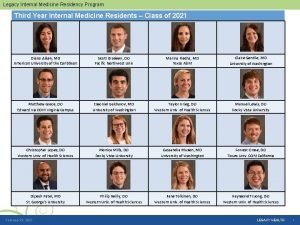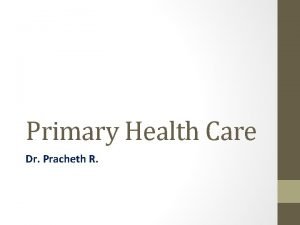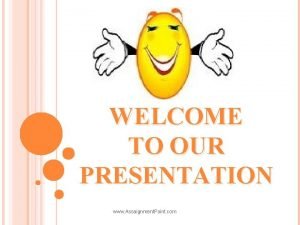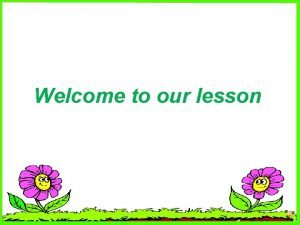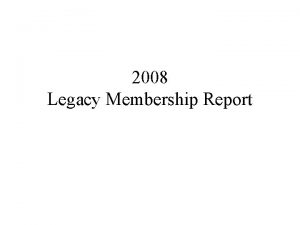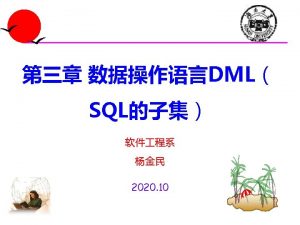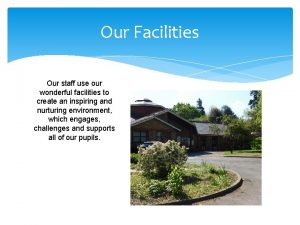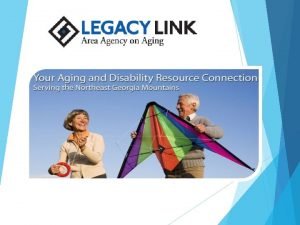WELCOME to LEGACY HEALTH Welcome Our staff is





















- Slides: 21

WELCOME to LEGACY HEALTH

Welcome • Our staff is excited to help you develop your clinical skills, knowledge base, and professional experience. All to better deliver quality patient care. • We will partner with you and your faculty advisor to develop a positive clinical experience for you. • We do need you to actively participate in this process and our unique culture.

Student Expectations Be open to learning Participate Ask questions Look for opportunities to learn, help, & grow Be prepared Work as a member of the team- this means answering call lights, assisting visitors at the desk • Use the resources available to you • • •

Our Staff Expectations • Be open to teaching and participate • Have open dialog to determine level of comfort, level of skill, and knowledge base • Look for opportunities to assist in learning, helping, and growing • Be prepared • Use the resources available

How We Work to Provide Quality Care To Every Patient LEADING INDICATORS Focus on preventative measures vs reacting to an outcome: White Boards… improve the patient’s perception of communication Purposeful Rounding… helps Prevent Falls and HAPUs Bedside Report… reduces chances that important information is lost during Shift Change Standardized Handoffs and Transitions… reduce the problems that can occur in the exchange of info across hospital units

LEADING INDICATORS

WHITE BOARDS (Expectations) 1 Date 2 Nurse 3 Tech 4 Doctor 5 Family Contact 6 Plan 7 Diet 8 Activity 9 Daily Goals 10 Pain Goal 11 Code Status

LEADING INDICATORS

BEDSIDE REPORT (Expectations) STEPS 1 Focus 4 Safety Check 2 Pull up Epic 5 Include the Patient (When Possible) 3 SBARQ SAFETY CHECK EPIC Why are they being admitted Pertinent Medical History B L Lines / Drains / Tubes I ID Band P Pumps / IVs E Environment Abnormals Harm Prevention Measures R Skin Integrity Precautions, Code Status Abnormal Labs, Diagnostics A S Pending Clinical Interventions / Medications Plan of Care Special Equipment (Glasses, CPAP, Walker) Q What questions do you have for me? What questions do you have about your care? Items Attached to Patient S

Bedside Report Description § Verbal concise report at the bedside > 3 -5 minutes/patient > Use SBARQ § Introduction of new care giver – Manage Up! § Check patient identifiers – ID band check § Oncoming RN - log on in Epic § Off-going RN - update white board (if not done yet) § Both RNs to perform Safety Check of the environment: > Don’t SLIP: Skin integrity, Lines/drains, IVs/tubing, Pumps > Call light within reach, bed/chair alarms ON § Encourage patient involvement > Ask patient about concerns, questions, further comments November 29, 2020 LEGACY HEALTH 10

Incorporating SBARQ § Situation: Identify self and patient-check identifiers § Background: Diagnosis, pertinent history § Assessment: What is happening with patient QUESTIONS November 29, 2020 § Recommendation: What needs to be done and when § Questions: What questions do you have? LEGACY HEALTH 11

Finding Errors Professional communication is necessary when discrepancies arise. We need to address them in a positive way. Remember we all want the best for the patient. Address errors with questions, not statements • “Do we need to restart the Protonix drip? ” • “Should we restart the SCD machine? ” • “Should I get a new order for the patient’s restraints? ” Professional Communication • Non-judgmental • Kind • Supportive Major or Complicated Errors • May investigate outside of room ** HAVING A CODE WORD – safe communication

LEADING INDICATORS

What is Purposeful Rounding? A structured workflow for CHTs/CNAs and RNs to meet the specific needs of every patient.

Teamwork • Workload needs to be balanced • Good Communication • Jump in and help when people fall behind • Look for opportunities to provide assistance • Keep a good attitude and have fun! All patients are OUR patients

PURPOSEFUL ROUNDING (Expectations) • Develop a practical patient-specific plan • Ensure that the plan is communicated with appropriate team members • ACTIVELY address the 5 P’s EVERY time (based on the patient’s needs) POTTY Transfer to bedside commode or ambulate to restroom (provide assistance if appropriate) PAIN Pain assessment and discuss pain management plan and effectiveness POSITION Reposition to offload any pressure points POSSESSIONS Make sure all items are within reach PLAN Tell patient when you will be back

Key Points • CHT or CNA/RN Touch Base at the Start of Shift • Bed in lowest position • Brakes on • Call light within reach • Appropriate alarm set • Free of clutter (ready for next activity)

LEADING INDICATORS

HANDOFFS & TRANSITIONS (Expectations) HANDOFFS 1 Focus 4 Agree on Departure / Arrival Time 2 Pull up TTR / Kardex 5 Safety Check 3 SBARQ 6 Include the Patient (When Possible) FOCUS • Patients are at highest risk during a handoff or transition • Some of our lowest AHRQ Scores are related to handoffs and transitions Take a pause and be present

HANDOFFS & TRANSITIONS (Expectations) HANDOFFS 1 Focus 4 Agree on Departure / Arrival Time 2 Pull up TTR / Kardex 5 Safety Check 3 SBARQ 6 Include the Patient (When Possible) STEP WHAT 1 Focus 2 Pull up TTR / Kardex 3 SBARQ 4 Agree on Departure / Arrival Time 5 Safety Check 6 Include the Patient (When Possible) WHO Patients are at highest risk during handoffs (take a pause and be present) Receiving unit makes phone call and documents on TTR Both units are responsible for pulling up the Kardex Sending unit provides the verbal SBARQ Both agree on an departure/arrival time • Sending Unit: Ensure that the patient is prepared to transfer • Receiving Unit: Ensure that you/team member are available to receive the patient Receiving department completes Safety Check • SLIP (E) – Skin, Lines, ID, Pumps, Environment Both parties are responsible for engaging the patient/family

QUESTIONS
 Welcome welcome this is our christmas story
Welcome welcome this is our christmas story Dr marina flecha
Dr marina flecha Staff pattern of sub centre
Staff pattern of sub centre Thinking language and intelligence
Thinking language and intelligence Our census our future
Our census our future Christ be our light
Christ be our light Our life is what our thoughts make it
Our life is what our thoughts make it We bow our hearts we bend our knees
We bow our hearts we bend our knees Our census our future
Our census our future Our life is what our thoughts make it
Our life is what our thoughts make it Our collective madness is for *
Our collective madness is for * Awareness of ourselves and our environment is
Awareness of ourselves and our environment is Awareness of ourselves and our environment is
Awareness of ourselves and our environment is God our father christ our brother
God our father christ our brother Our future is in our hands quotes
Our future is in our hands quotes Our awareness of ourselves and our environment.
Our awareness of ourselves and our environment. Awareness of ourselves and our environment is
Awareness of ourselves and our environment is Welcome to our presentation
Welcome to our presentation Sunday morning worship service
Sunday morning worship service Welcome to our presentation
Welcome to our presentation Welcome to our online class
Welcome to our online class Welcome to our lesson
Welcome to our lesson

